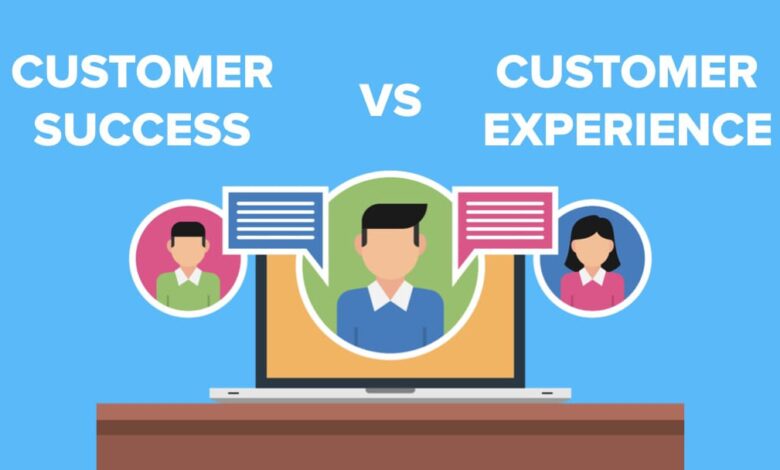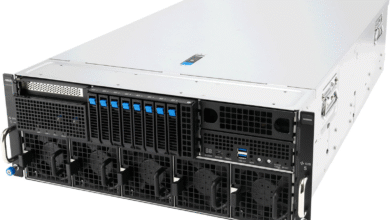Customer Success vs. Customer Experience: What’s the Difference?
Customer Success vs. Customer Experience: Key Differences

When it comes to growing a business and keeping customers happy, two terms often come up: customer success and customer experience. While they might sound similar, they are not the same thing. Many businesses confuse the two, which can lead to missed opportunities for building stronger relationships with their customers.
In this article, we’ll break down customer success vs. customer experience, highlight the key differences, and explain why both are essential for long-term business success. If you’ve ever wondered what is customer success experience or how it connects with customer experience, this guide is for you.
Pro tip: Many companies also turn to customer experience consulting services to improve how they manage both areas.
What is Customer Experience?
Customer experience (CX) is the overall impression a customer has of your business based on every interaction they’ve had with your brand.
Think of it like this: from the first time a customer hears about your business, to browsing your website, contacting support, purchasing a product, and even after-sales service—every single touchpoint creates a customer experience.
Key elements of customer experience include:
- Ease of use: How simple and smooth it is to use your website, app, or product.
- Customer support: How well you handle queries, complaints, or issues.
- Brand perception: How your company makes people feel overall.
- Consistency: Whether your service or product is reliable every time.
Example: Imagine ordering food through a mobile app. If the app is easy to use, the delivery is on time, and customer support resolves issues quickly, you’ve had a great customer experience.
What is Customer Success?
Customer success (CS) focuses on making sure customers achieve their desired outcomes while using your product or service.
Unlike customer experience, which is about how customers feel, customer success is about what customers achieve. The idea is to be proactive instead of reactive. Instead of waiting for customers to reach out with problems, businesses with strong customer success teams anticipate challenges and help customers get the most value.
Key elements of customer success include:
- Onboarding: Helping new customers start using your product effectively.
- Education: Providing resources, tutorials, or training to maximize value.
- Proactive support: Checking in with customers before problems happen.
- Goal alignment: Ensuring the customer’s goals are being met.
Example: If you use a project management tool, a customer success manager might reach out with training videos, usage tips, and regular check-ins to make sure your team is achieving productivity goals.
Customer Success vs. Customer Experience — The Core Differences
At first glance, customer success vs. customer experience might feel like two sides of the same coin. But there are some clear differences.
1. Focus Area
- Customer experience: Focuses on how customers feel during their journey.
- Customer success: Focuses on the customer’s outcomes and achievements.
2. Approach
- CX: More reactive. Businesses often respond to customer feedback or complaints.
- CS: More proactive. Teams work ahead of time to ensure customers succeed.
3. Measurement
- CX metrics: Net Promoter Score (NPS), Customer Satisfaction Score (CSAT), Customer Effort Score (CES).
- CS metrics: Retention rates, product adoption, customer lifetime value, upsell/cross-sell opportunities.
4. Impact
- Customer experience: Creates brand loyalty and satisfaction.
- Customer success: Drives customer growth, renewals, and long-term business expansion.
Why Businesses Need Both
Here’s the truth: customer experience and customer success work best when they go hand in hand. You cannot rely on one and ignore the other.
Benefits of focusing on customer experience:
- Builds trust and loyalty.
- Encourages positive word-of-mouth.
- Increases customer satisfaction scores.
Benefits of focusing on customer success:
- Improves product adoption.
- Reduces customer churn.
- Increases upselling and cross-selling opportunities.
When combined, businesses not only make customers happy but also ensure they achieve real results. This balance leads to long-term growth.
What is Customer Success Experience?
Now, let’s look at the term customer success experience.
This is the blend of customer success and customer experience. It’s the complete journey where customers not only feel satisfied (CX) but also achieve their goals (CS).
In short:
- Customer experience = Feelings
- Customer success = Results
- Customer success experience = Both combined
Example: A fitness app might provide:
- Smooth navigation and fast support (good customer experience).
- Personalized workout plans and regular progress tracking (customer success).
Together, this creates a powerful customer success experience.
How to Improve Both Areas
Here are some practical steps to improve both customer success and customer experience:
Improving Customer Experience
- Make your website and apps easy to use.
- Provide quick and friendly customer support.
- Collect and act on customer feedback.
- Keep your brand consistent across all channels.
Improving Customer Success
- Offer personalized onboarding for new customers.
- Share knowledge resources like blogs, tutorials, or webinars.
- Use data to identify customers who might be struggling.
- Regularly check in with customers to measure progress.
Customer Success vs. Customer Experience in Real Business
To make things clearer, let’s look at an example from the software industry.
- Customer Experience: A SaaS company designs a clean, user-friendly dashboard, provides fast support, and ensures smooth billing.
- Customer Success: The company assigns a success manager who helps the customer adopt new features, aligns software with business goals, and ensures measurable ROI.
Without strong customer experience, clients might feel frustrated. Without customer success, clients may not get full value and eventually leave. But when both are combined, customers are satisfied and successful.
Final Thoughts
When comparing customer experience vs customer success, the key difference is clear:
- Customer experience is about how customers feel during their journey.
- Customer success is about what customers achieve through your product or service.
For long-term growth, businesses must invest in both. Together, they create a strong customer success experience, where customers are not just satisfied but also achieving real value.
If your business wants to build stronger customer relationships, focusing on both areas is no longer optional, it’s a must.




